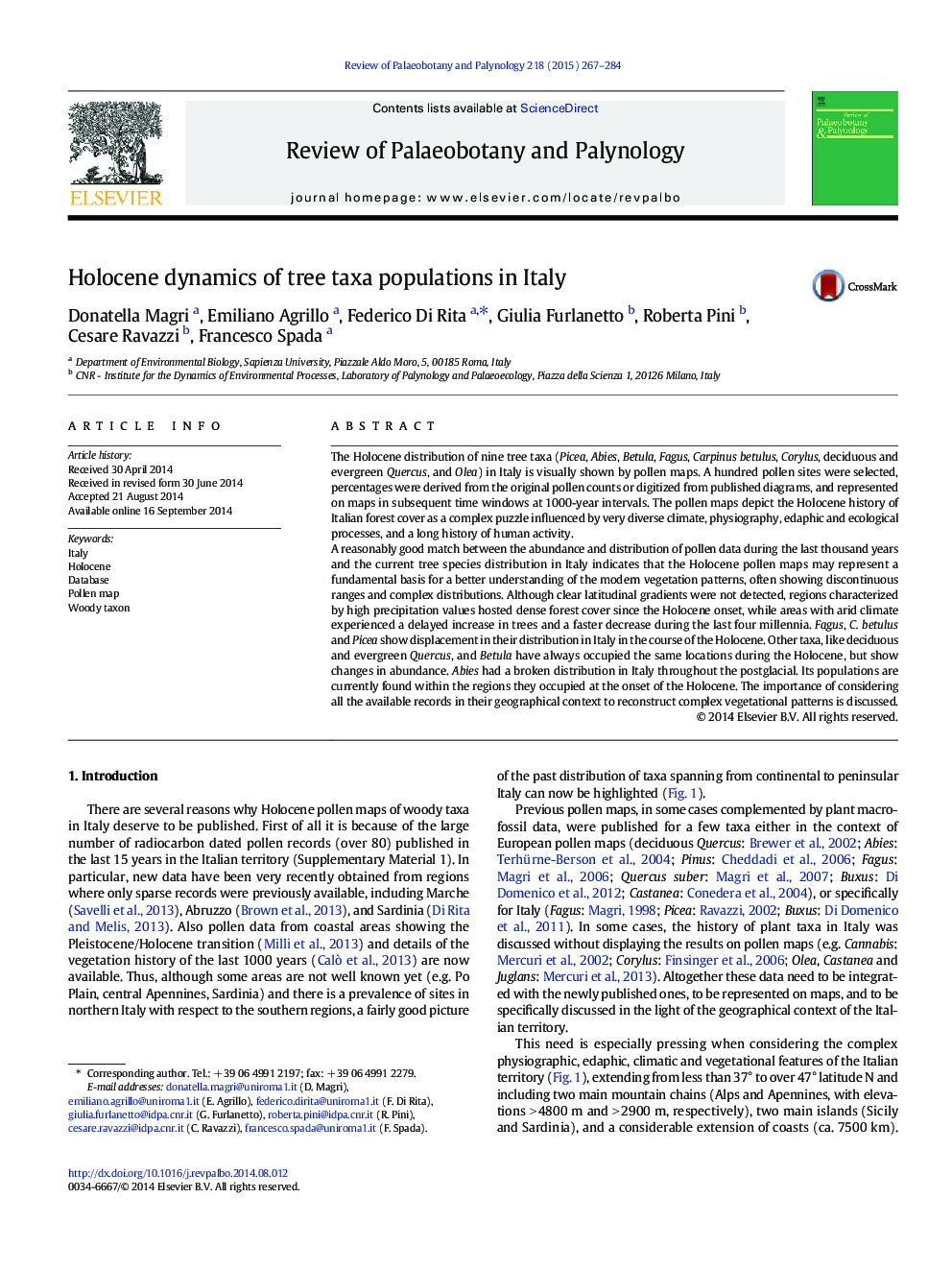| کد مقاله | کد نشریه | سال انتشار | مقاله انگلیسی | نسخه تمام متن |
|---|---|---|---|---|
| 4750195 | 1642480 | 2015 | 18 صفحه PDF | دانلود رایگان |
• Complex modern distributions of trees in Italy can be traced back in pollen maps.
• Holocene spread of tree populations of Fagus, Carpinus and Picea are observed.
• Quercus and Betula persisted in the same areas during the whole Holocene.
• Abies is now found within the regions it occupied at the beginning of the Holocene.
• No clear latitudinal gradient is observed in the Holocene vegetation history.
The Holocene distribution of nine tree taxa (Picea, Abies, Betula, Fagus, Carpinus betulus, Corylus, deciduous and evergreen Quercus, and Olea) in Italy is visually shown by pollen maps. A hundred pollen sites were selected, percentages were derived from the original pollen counts or digitized from published diagrams, and represented on maps in subsequent time windows at 1000-year intervals. The pollen maps depict the Holocene history of Italian forest cover as a complex puzzle influenced by very diverse climate, physiography, edaphic and ecological processes, and a long history of human activity.A reasonably good match between the abundance and distribution of pollen data during the last thousand years and the current tree species distribution in Italy indicates that the Holocene pollen maps may represent a fundamental basis for a better understanding of the modern vegetation patterns, often showing discontinuous ranges and complex distributions. Although clear latitudinal gradients were not detected, regions characterized by high precipitation values hosted dense forest cover since the Holocene onset, while areas with arid climate experienced a delayed increase in trees and a faster decrease during the last four millennia. Fagus, C. betulus and Picea show displacement in their distribution in Italy in the course of the Holocene. Other taxa, like deciduous and evergreen Quercus, and Betula have always occupied the same locations during the Holocene, but show changes in abundance. Abies had a broken distribution in Italy throughout the postglacial. Its populations are currently found within the regions they occupied at the onset of the Holocene. The importance of considering all the available records in their geographical context to reconstruct complex vegetational patterns is discussed.
Journal: Review of Palaeobotany and Palynology - Volume 218, July 2015, Pages 267–284
